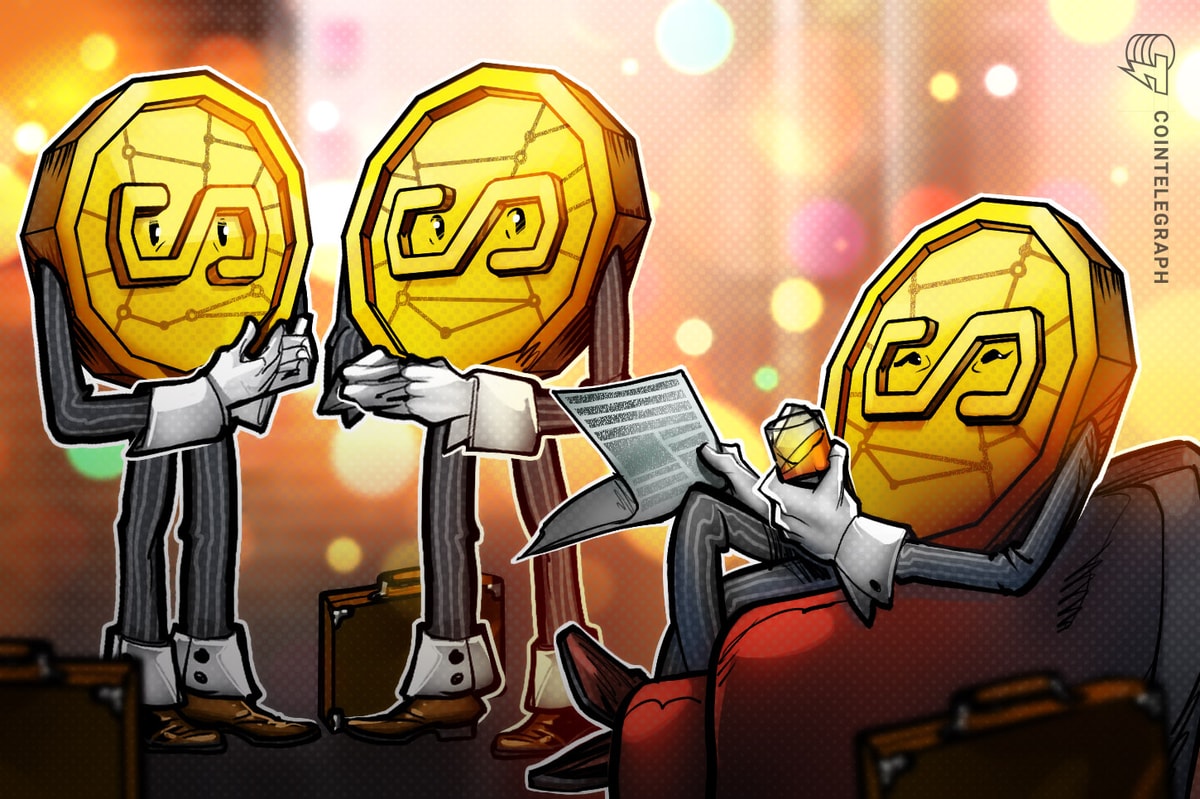Opinion of: Maksym Sakharov, co-founder and group CEO from WEFI
The current markets experience tailwind attributable to the tariffs imposed on the US administration and retaliation measures by trading partners. So far, nevertheless, the market representatives say that Trump's tariffs are primarily a negotiating strategy and that their effects on corporations and consumers remain manageable.
Market uncertainty promotes institutional interest
In addition, there’s inflation pressure that might query the prospects of the US Federal Reserve. In addition, an upcoming fiscal debate in Washington results in pleasure in the marketplace in regards to the federal budget.
The solution to the debt limit stays an urgent problem, for the reason that Ministry of Finance is currently based on “extraordinary measures” as a way to meet the financial obligations of the United States. The exact timeline for the exhaustion of those measures is unclear, but analysts assume that they may exit after the primary quarter.
While the administration has proposed to eliminate the debt limit, this may very well be exposed to the resistance of fiscal conservatives within the congress. According to a recently published report, a sector with constant growth is stable coins despite this macroeconomic uncertainty. Much of the amount is powered by currents in Ther's USDT (USDT) and USDC (USDC).
Stable coins packed in dollars dominate the market
Stable coins began as an experiment – a programmable digital currency that makes it easier for users to enter the crypto market and exchange various digital assets. A decade later, they’re a very important a part of the broader digital financial infrastructure.
Stablecoin market capitalization is currently at 226 billion US dollars and continues to grow. The demand in emerging countries drives this growth. In a recently carried out ARK Invest report, it is claimed that stablecoins in dollars dominate the market. They make up over 98% of the StableCoin offer, whereby stable coins with gold and euros only share a small a part of the market.
In addition, Ther's Usdt accounts for over 60% of the general market. The research of ARK suggests that the market is expanding and Asian currency staling tablecoins comprises.
Youngest: The US will use stable coins to make sure a dollar hegemony – Scott Bessent
In addition, digital assets undergo a shift, which is characterised by “stable coinization” and “dollarization”. Asian nations reminiscent of China and Japan have unloaded the record quantities of the US treasure search. Saudi Arabia has ended its 45-year petrodollar agreement, and BRICS nations are increasingly avoiding the Swift network as a way to reduce dependence on the US dollar.
Bitcoin (BTC) and Ether (Eth) were traditionally the most important entry points within the digital asset ecosystem. However, stable coins have taken the lead up to now two years, which now corresponds to 35% to 50% of Onchain transaction volumes.
Despite global regulatory headwind, the emerging countries used stable coins. In Brazil, 90% of crypto transactions are carried out via stable coins, that are mainly used for international purchases.
A Visa report describes Nigeria, India, Indonesia, Turkey and Brazil as probably the most lively StableCoin markets, and Argentina in StableCoin Holdings. In addition, six out of 10 purchases within the country were made with stable coins that were recorded on the dollar, with almost parity between USDC and USDT.
This displacement within the direction of stable coins in Argentina is driven by a high inflation and the necessity to protect the Argentine peso from devaluation. People in countries with unstable currencies turn to stable coins like USDT to guard their assets.
Deobanks and their role in areas with high risk
Stable coins has paved the way in which for a brand new generation of monetary services. For example, stable coins have provided the idea for decentralized onchain banks or deobanks that consider stable coins as their native currency.
Deobanks make digital banking and financial services accessible to everyone, even individuals who don’t meet strict criteria for opening the account. They also attract individuals who don’t trust traditional institutions with their money. Users keep complete control over their funds via non-customer-specific accounts and luxuriate in the transparency of real-time transactions.
Deobanks' decentralized nature replaces mediators with intelligent contracts that connect personal wallets on to digital bank accounts. This approach lowers the prices and accelerates the transactions. Onchain data transparently protect every transaction detail. The result’s a financial model that’s each efficient and integrative.
What is it ahead of us
Analysts predict that the market capitalization of StableCoin will outperform 400 billion US dollars in 2025. Deobanks have a brand new advantage for this growth and use stable coins to advertise economic growth and expand digital payment networks. They open up recent ways for cross -border trade and recent opportunities for financial integration.
Over the subsequent few years, the combined increase in stablecoins and next generation onchain banks will change how money moves across borders and transactions. The blockchain integration on the back end and the StableCoin Foundation promotes lower fees, faster payments and wider access to financial services. The trend represents a departure of outdated systems and signals a more resilient financial ecosystem.
Opinion of: Maksym Sakharov, co-founder and group CEO from WEFI.
This article serves general information purposes and shouldn’t be considered legal or investment advice. The views, thoughts and opinions which are expressed listed here are solely that of the writer and don’t necessarily reflect the views and opinions of cointelegraph or don’t necessarily represent them.

